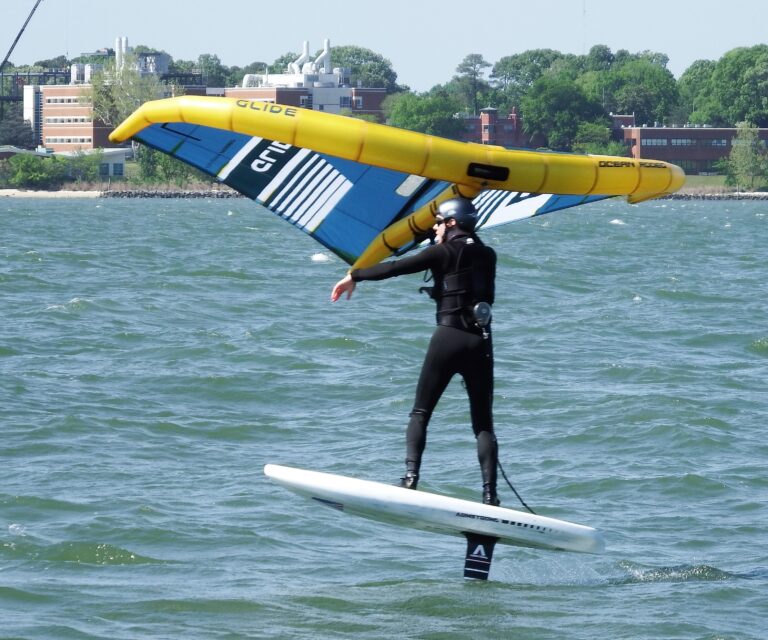It took me years to realize while sailing that once you cross the York River the current on the north side dissipates because it gets shallower. The river current and the tidal current combine in the middle of the river to form a wicked 3-4 mph lateral drag on the boat during mid-tide when it runs the fastest. All of this is imperceptible under sail unless you happen to pass a fixed object like a buoy, when you can see the current effect vividly as the thing whizzes by.
Keith Schafer saw this immediately as we sailed north across the river. I showed him how to point 15 degrees higher in the shallows, and he got it. That’s because he coaches high school crew on the Hudson River in New York near his home in New Windsor, above West Point. On this hazy day, he was enjoying a rising wind with his wife and daughter while on vacation before school resumes. He teaches high school math and she works in speech therapy.
“We tend to start practice at 5 or 5:30 in the morning when the river is usually glassy. We can still feel the current, though, which runs 2 to 4 knots. Once we start seeing whitecaps, we’re done. That means the wind is blowing 10 miles per hour.
“A bigger problem for us is the wake of passing boat. We have to turn parallel to the wake of a passing boat and sort of roll with it. If we try to cross a wake it can swamp the boat and sink it quickly. Even worse, rising up on a big wake and falling can crack the shell. It’s carbon fiber, and something as simple as stepping into it incorrectly can put your foot right through it.
“The four-person shell is 40 feet long, and the eight-person shell runs 60 feet. They’re heavy to carry, but not as heavy as the old wooden boats.”
Keith’s wife Colleen added, “Our oldest [son] is now coaching the Novice team at the U-Conn.”



